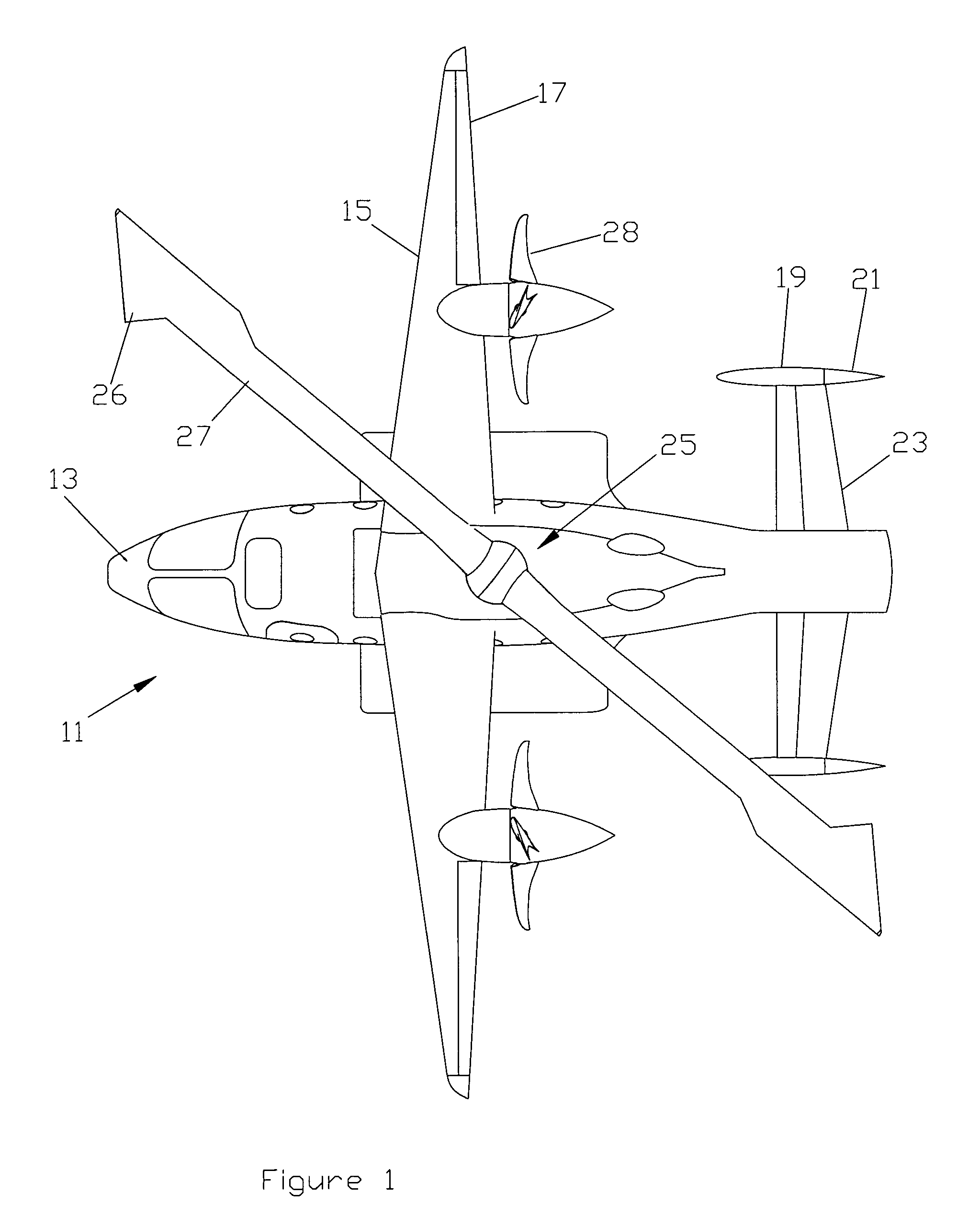Aircraft with rotor vibration isolation
a technology of rotor blades and airframes, which is applied in the field of rotor aircraft, can solve the problems of increased complexity and weight, significant ride vibration or disturbance felt by passengers, and use of more than two blades on the rotor, and achieves good dampening characteristics
- Summary
- Abstract
- Description
- Claims
- Application Information
AI Technical Summary
Benefits of technology
Problems solved by technology
Method used
Image
Examples
Embodiment Construction
[0017]Referring to FIG. 1, an example of a rotor aircraft 11 is shown. Aircraft 11 has a fuselage 13 and two fixed wings 15. Each wing 15 has an aileron 17 in this embodiment. Aircraft 11 also has two vertical stabilizers 19, each located immediately forward of a movable rudder 21. A movable horizontal stabilizer, referred to as a stabilator 23, is located between vertical stabilizers 19.
[0018]A rotor 25 is mounted to the upper side of fuselage 13. Rotor 25 has two blades 27 in this embodiment, but it could have more than two. Each blade 27 has tip weights 26 for providing inertia for jump takeoff and stabilization at slow rotor speeds. Aircraft 11 has two propellers 28 in this embodiment, each mounted to one of the wings 15. Preferably propellers 28 provide differential thrust to counter the torque created by rotor 25 when driven during flight, particularly when hovering. Aircraft 11, alternately, could have a single propeller mounted along the longitudinal axis of fuselage 13. In ...
PUM
 Login to View More
Login to View More Abstract
Description
Claims
Application Information
 Login to View More
Login to View More - R&D
- Intellectual Property
- Life Sciences
- Materials
- Tech Scout
- Unparalleled Data Quality
- Higher Quality Content
- 60% Fewer Hallucinations
Browse by: Latest US Patents, China's latest patents, Technical Efficacy Thesaurus, Application Domain, Technology Topic, Popular Technical Reports.
© 2025 PatSnap. All rights reserved.Legal|Privacy policy|Modern Slavery Act Transparency Statement|Sitemap|About US| Contact US: help@patsnap.com



